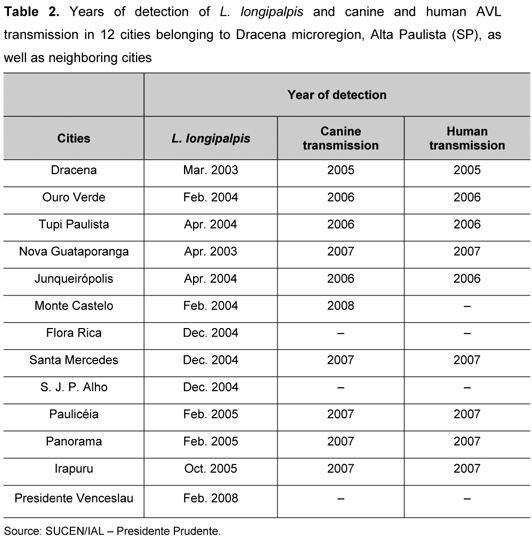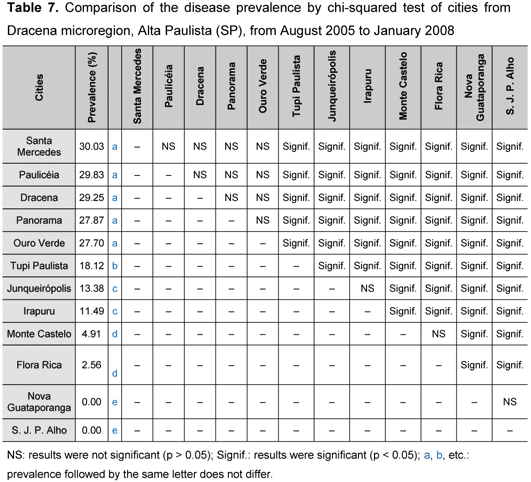Despite measures adopted to control American visceral leishmaniasis (AVL), the disease is spreading in a fast and worrying way throughout western São Paulo state. The aim of this work was to study the variables involved in the disease cycle as well as the effectiveness of controlling measures. The study was carried out in the microregion of Dracena, which is composed of twelve cities and belongs to Alta Paulista, a region of western São Paulo. The necessary data were provided by the Superintendence for Endemic Disease Control and Adolfo Lutz Institute, Regional Laboratory of Presidente Prudente. From August 2005 to January 2008, the following factors were observed: detection of phlebotomine sandflies in the cities and periods in which dogs or humans were diagnosed; number of human deaths; prevalence of suspected dogs tested by serology; percentage of euthanasia in suspected dogs; a possible correlation between positive dogs and cases of the disease in humans; and the disease prevalence among municipalities from the studied region. It was verified that, despite the strategies adopted in Dracena microregion to control AVL, the disease continues to rise. Thus, some procedures of the AVL Monitoring and Control Program should be reviewed, to grant the initiative more credibility and effectiveness.
visceral leishmaniasis; seroprevalence; control strategies; São Paulo; Brazil








